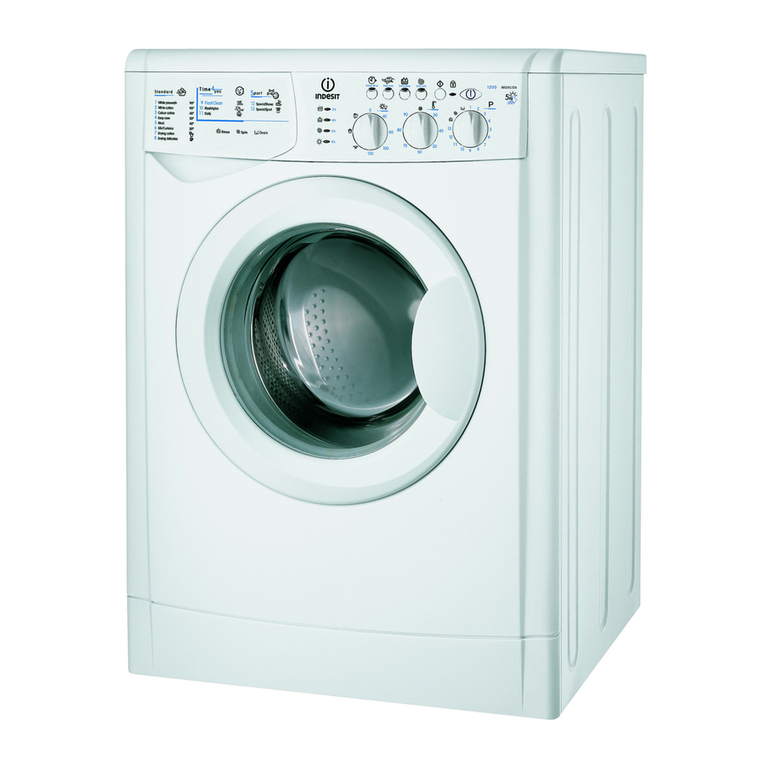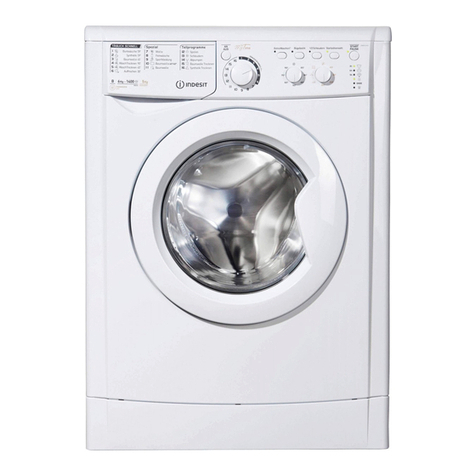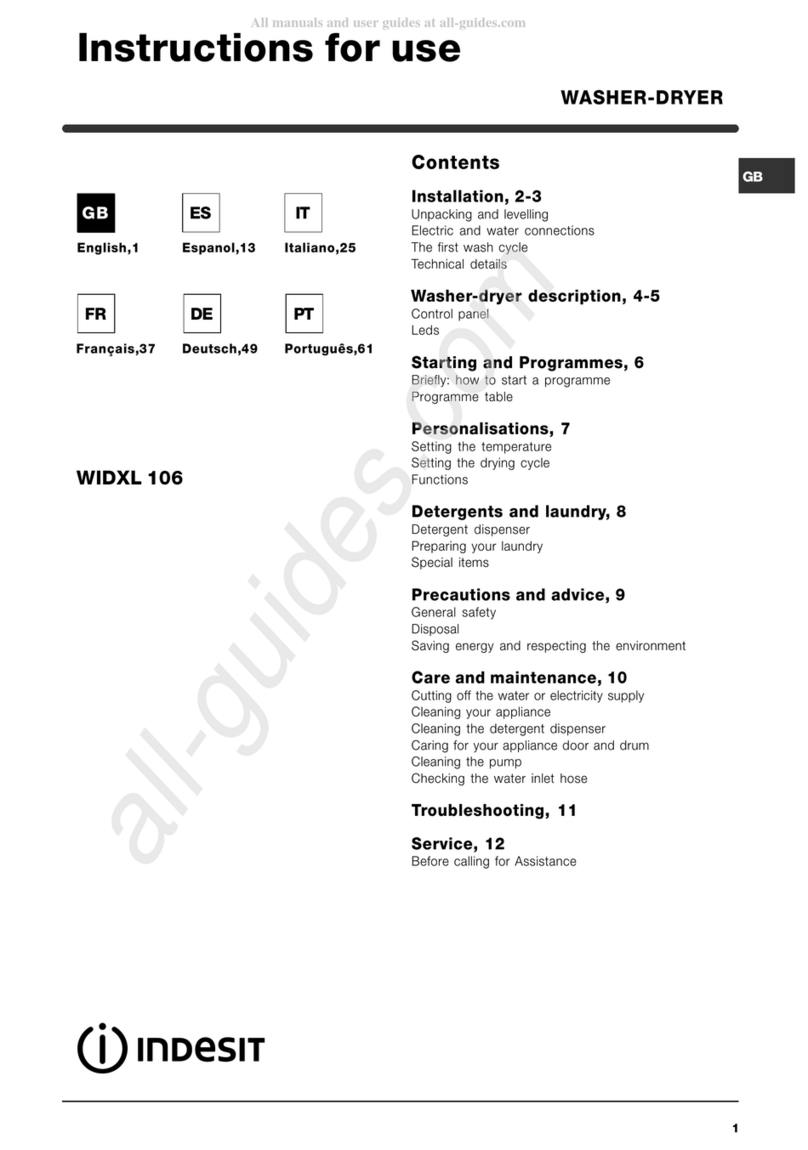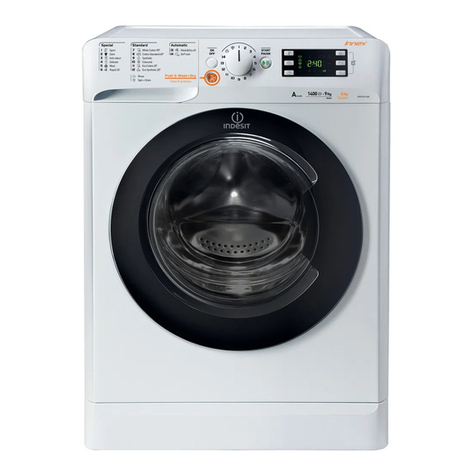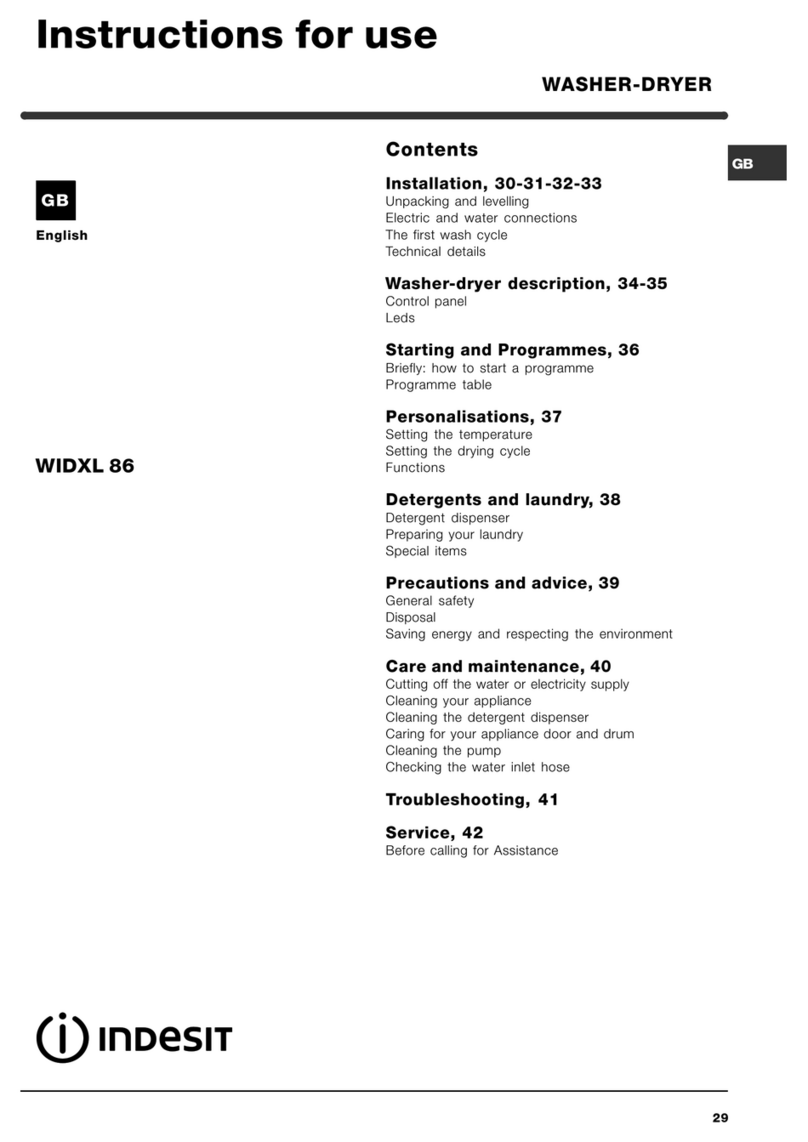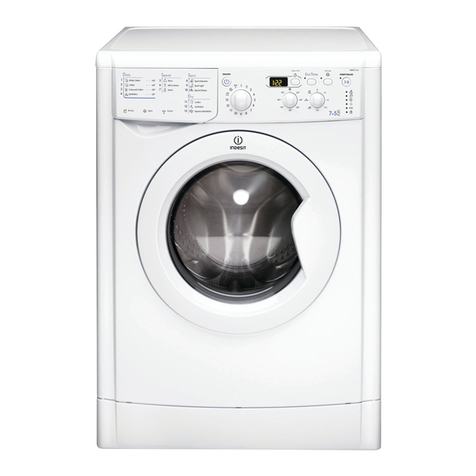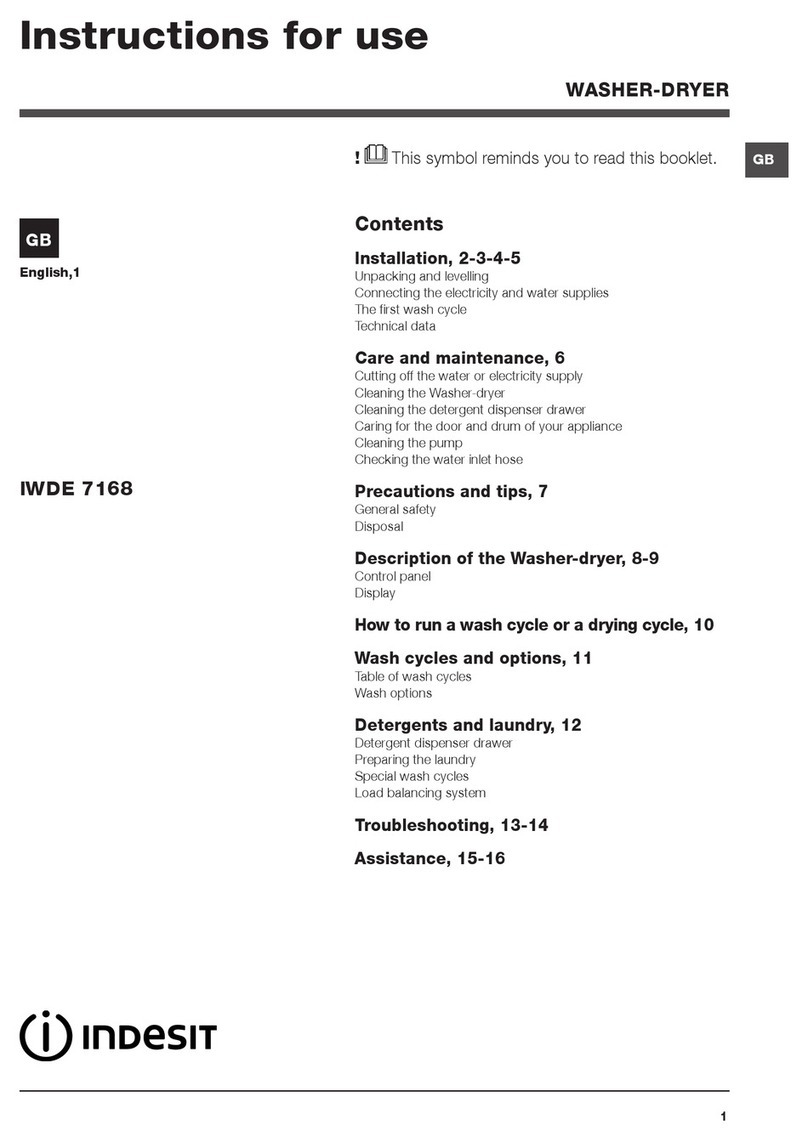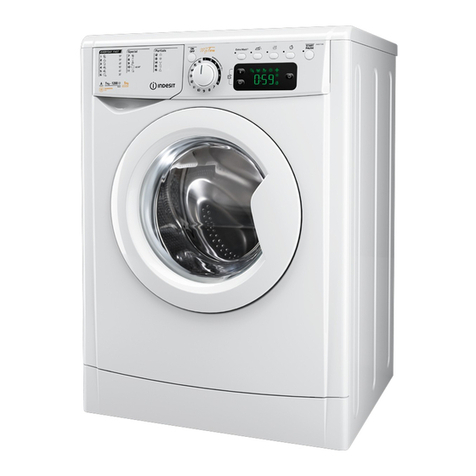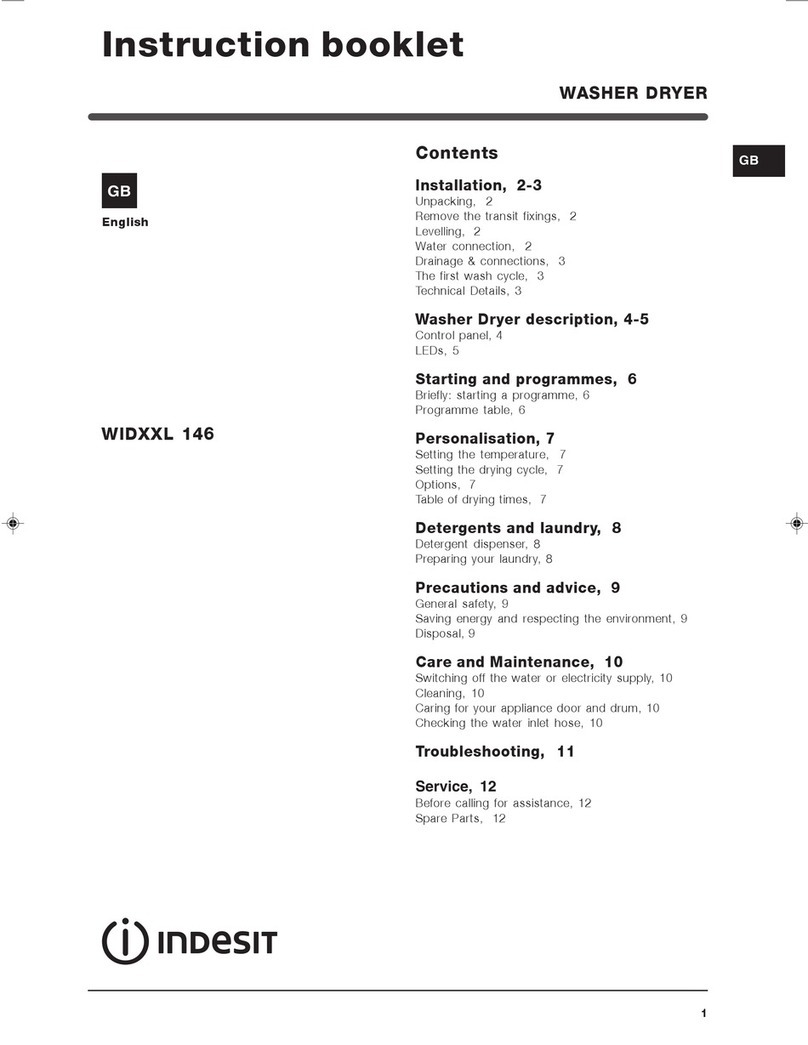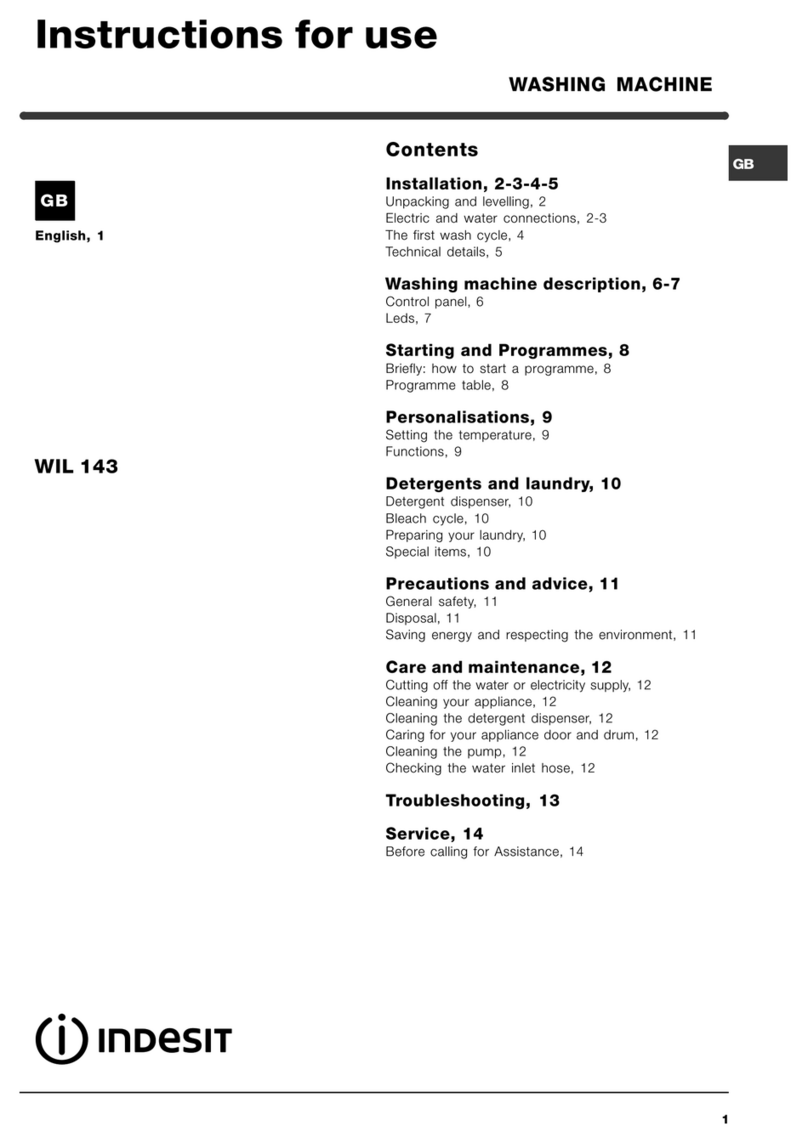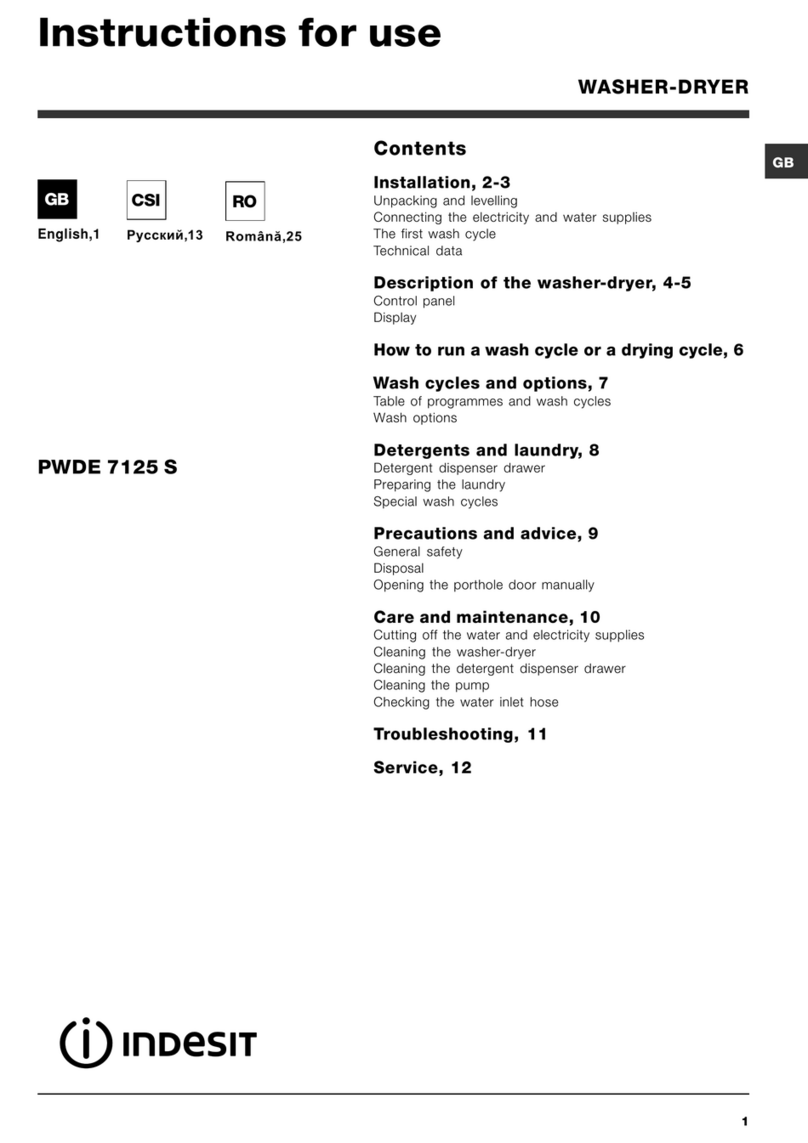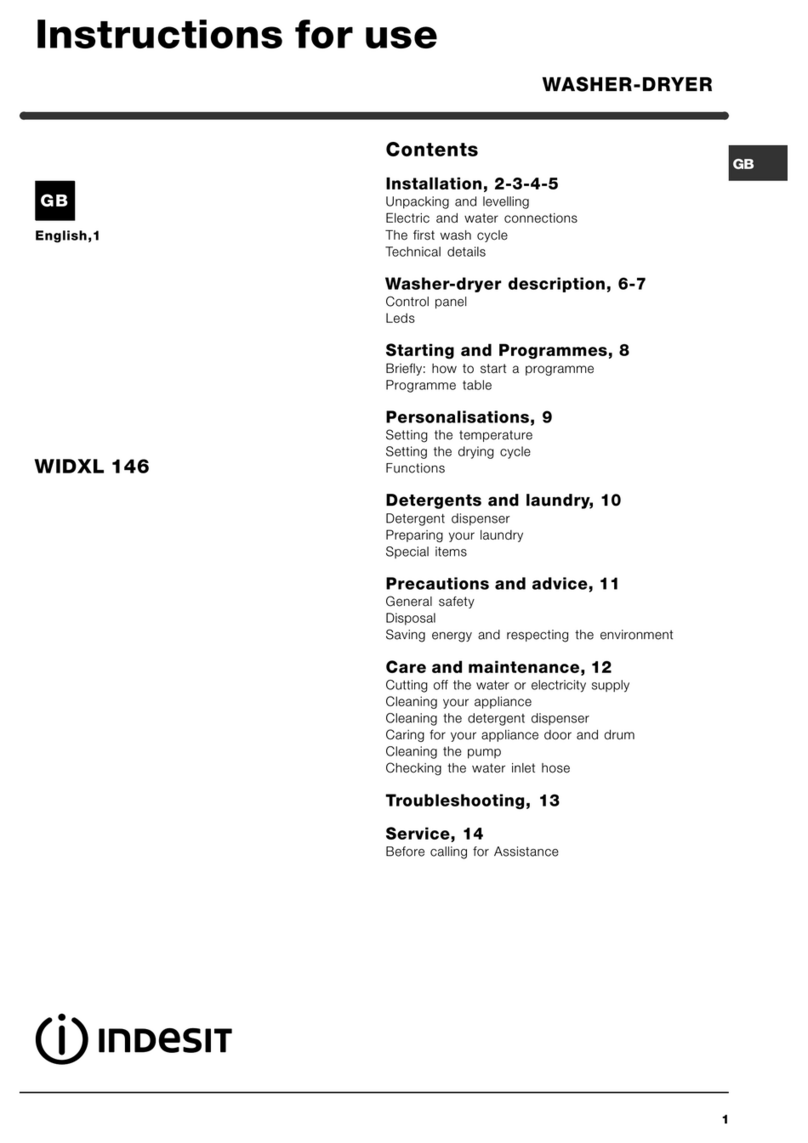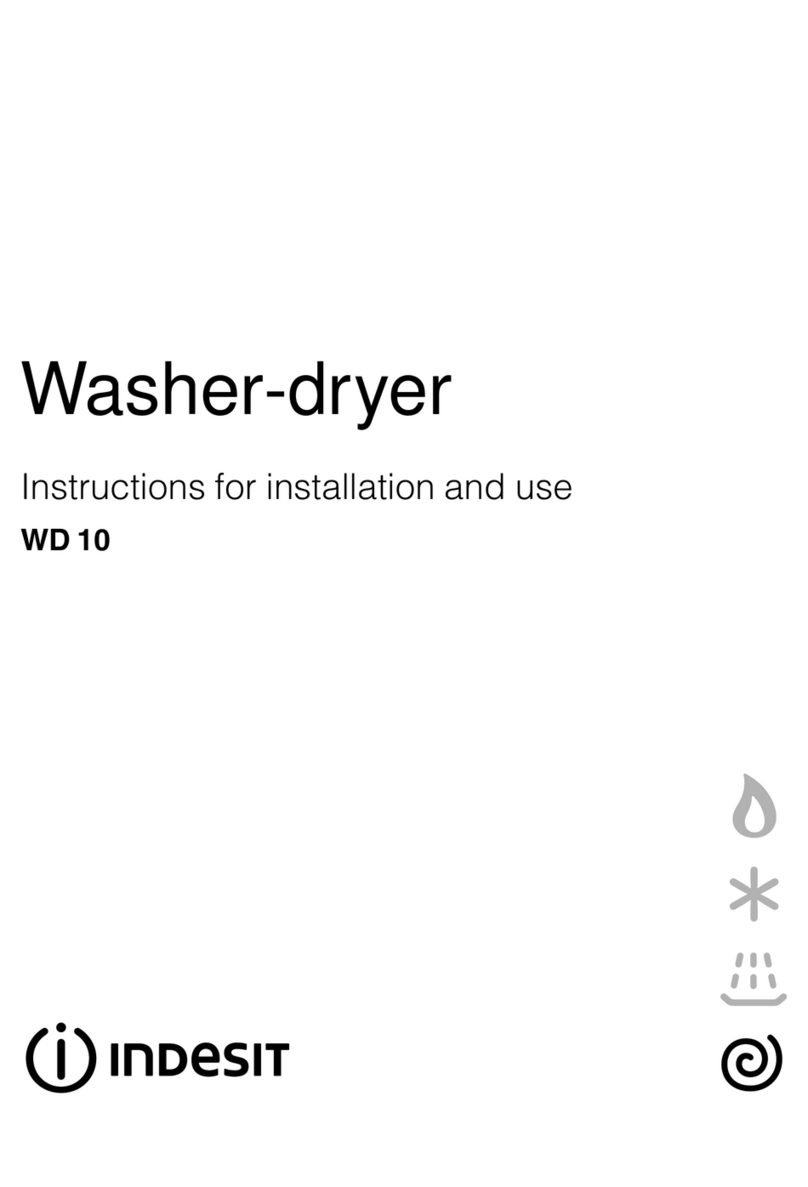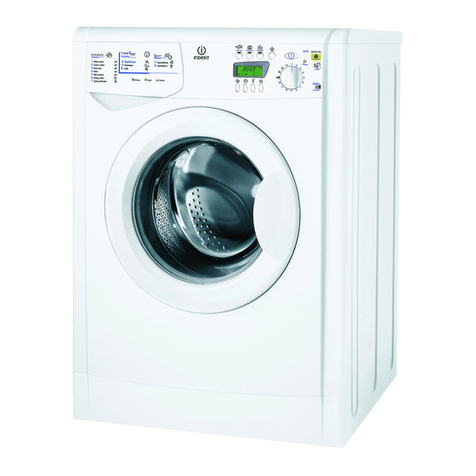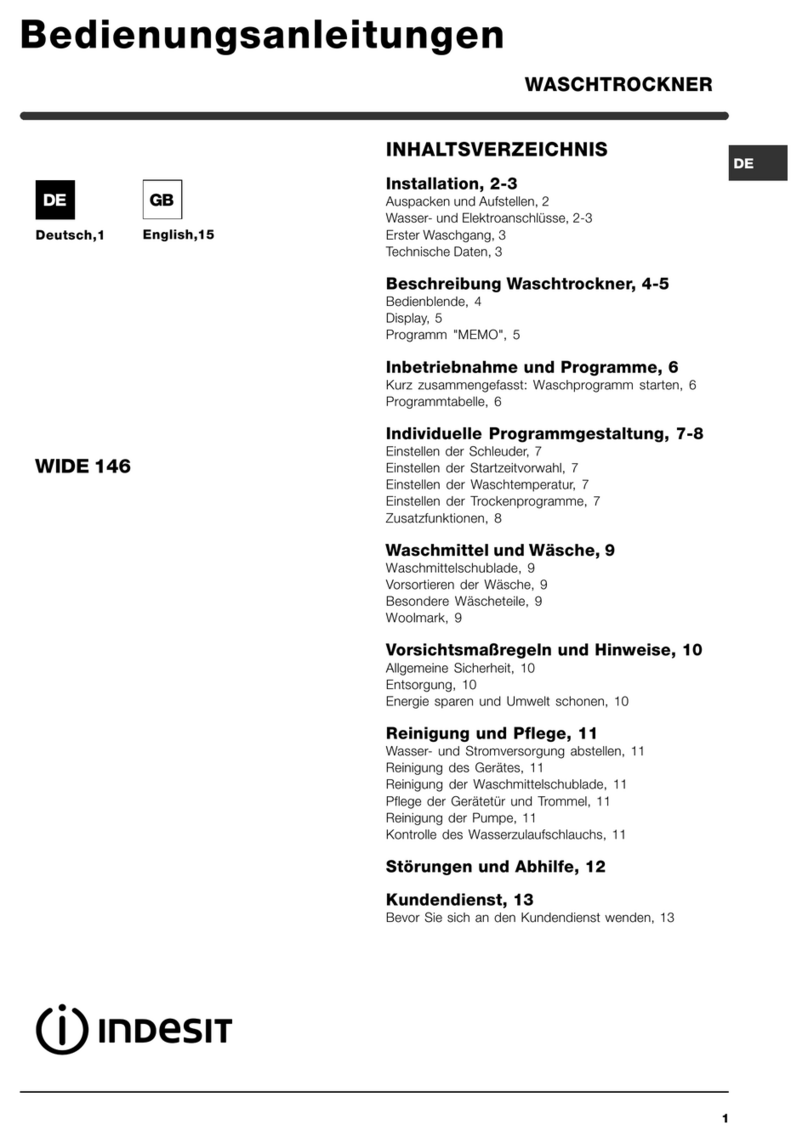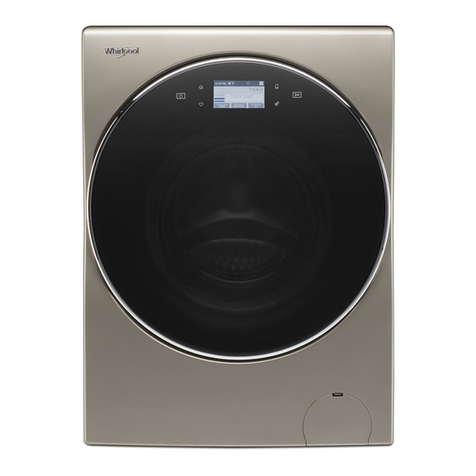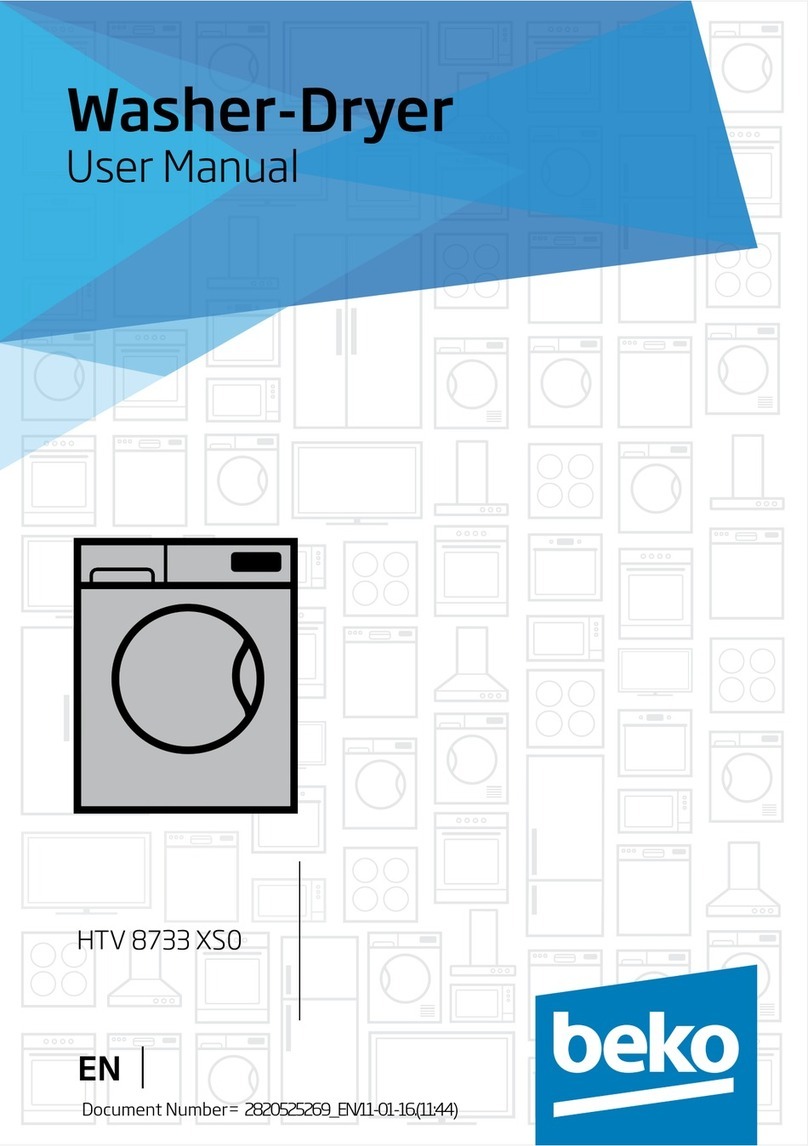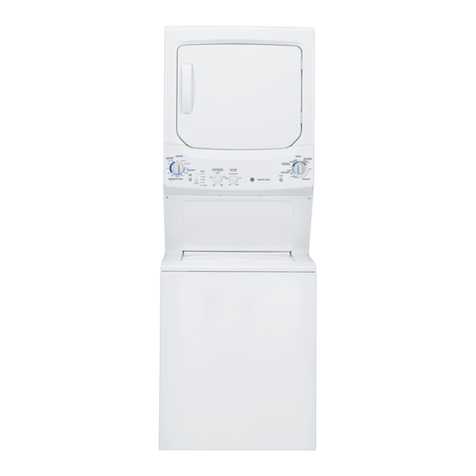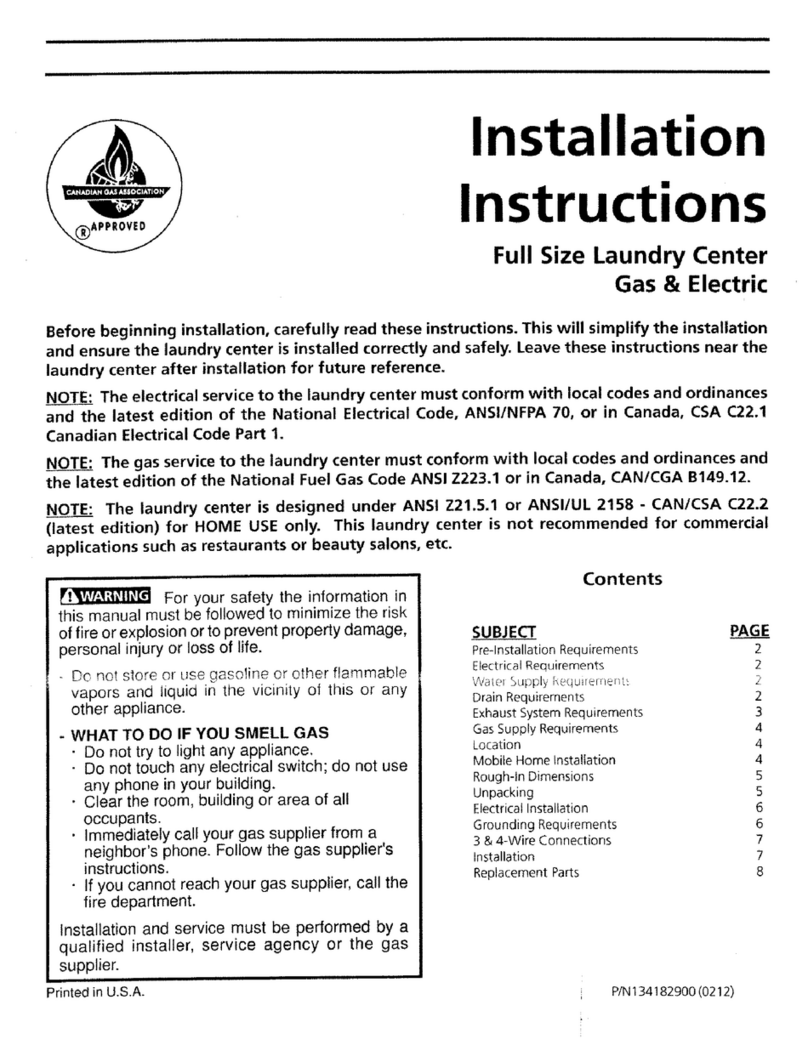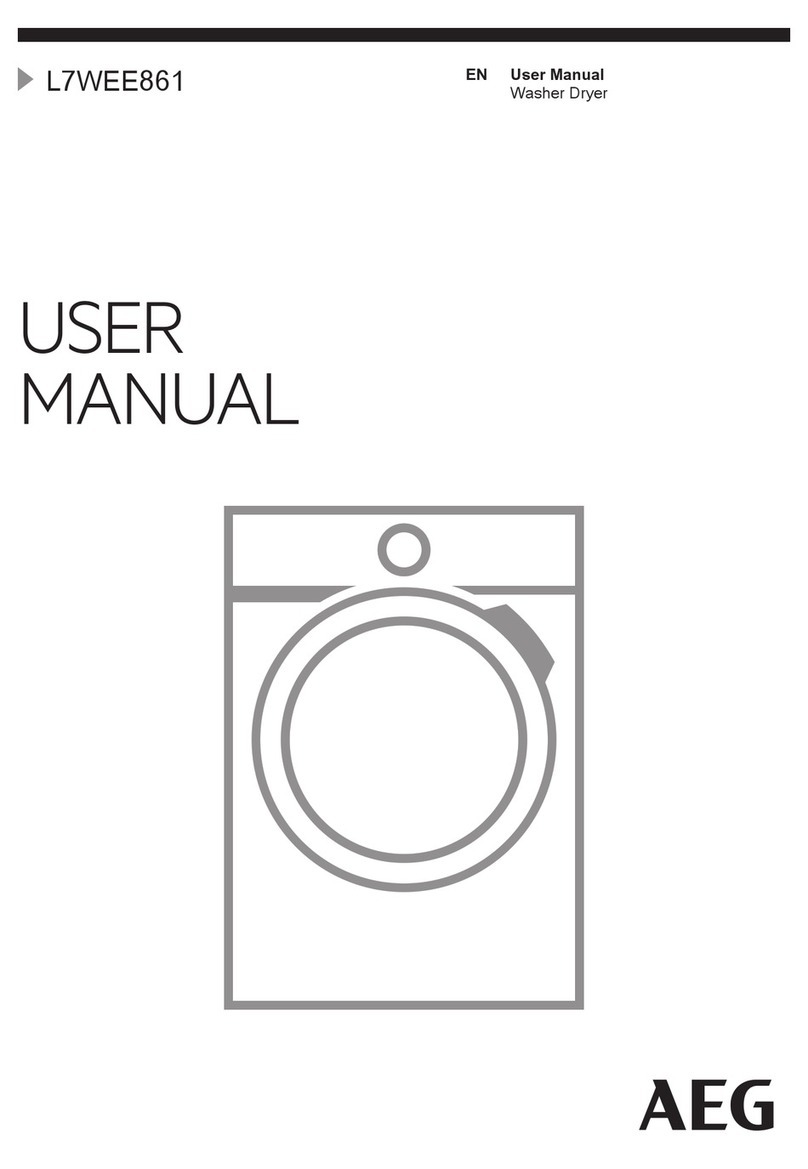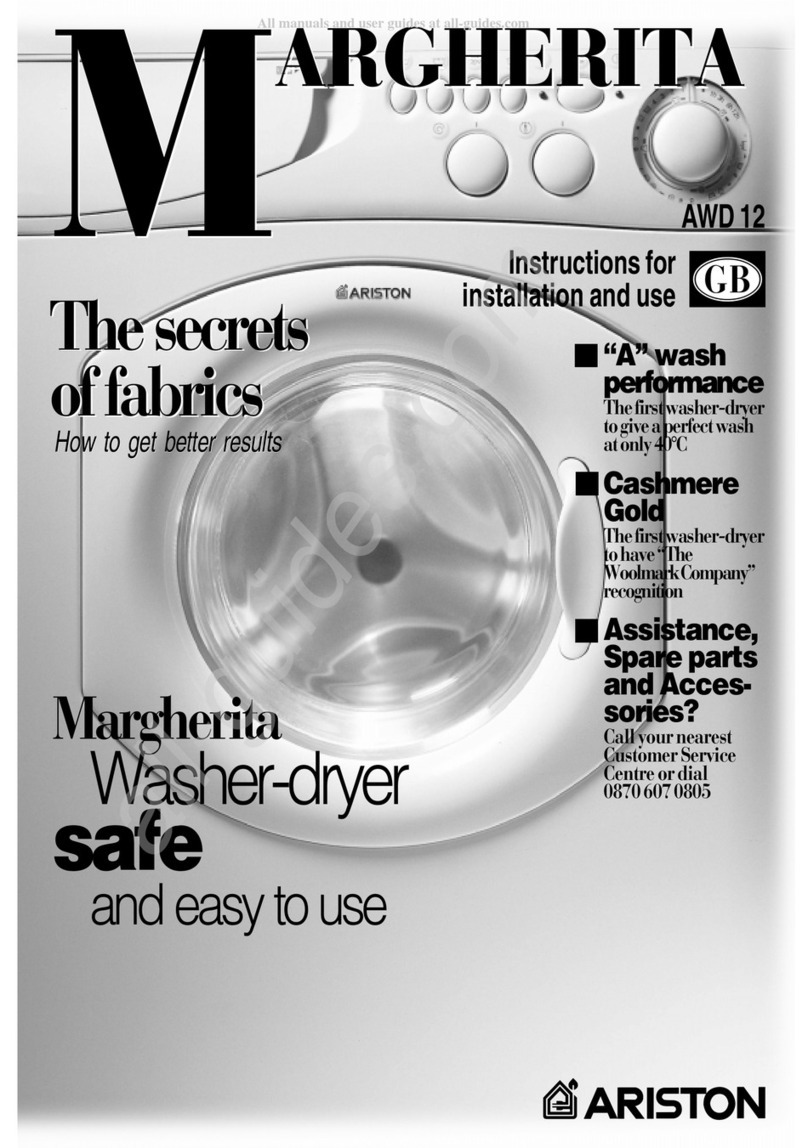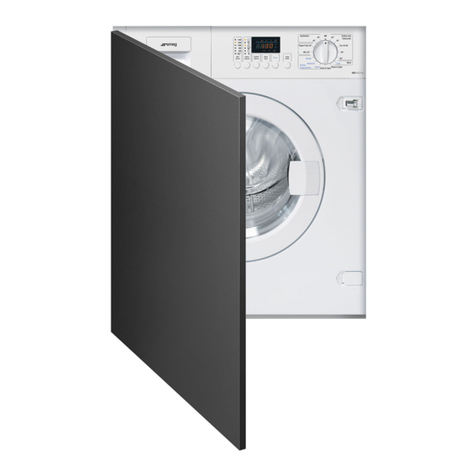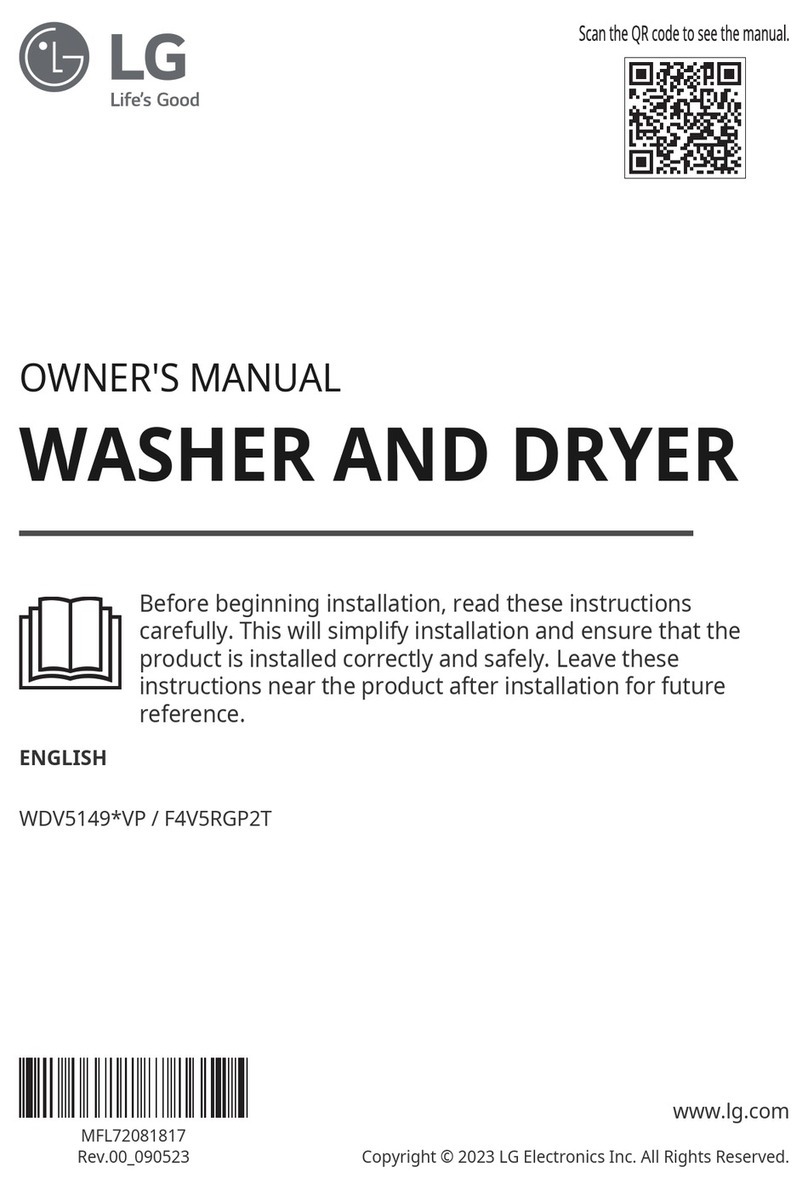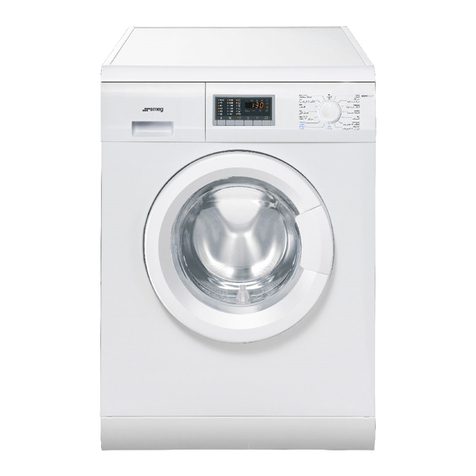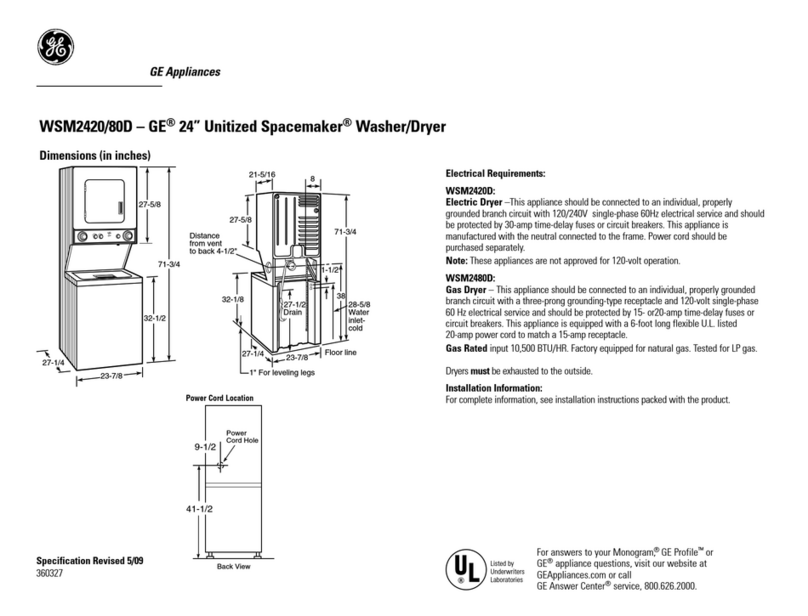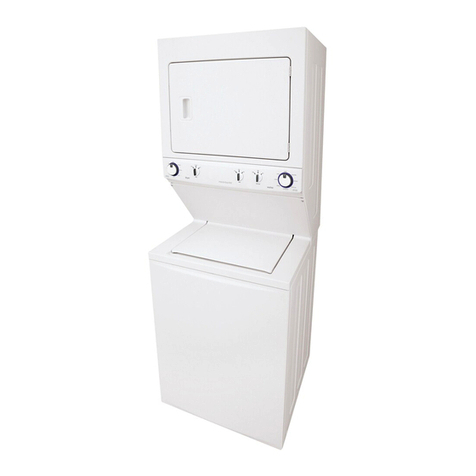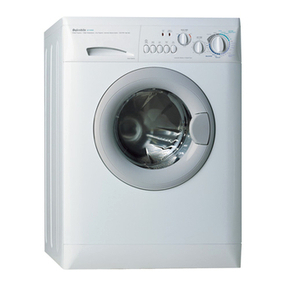GB
9
Setting the temperature
Press the TEMPERATURE button to set the wash temperature (see Table of wash cycles).
The temperature may be lowered, or even set to a cold wash .
The waher-dryer will automatically prevent you from selecting a temperature which is higher than the maximum.
Setting the drying cycle
Note: if all the drying indicator lights remain unlit, the
machine will not perform the drying cycle.
Press the DRYIN knob to select the desired drying
option. There are two options:
A - Based on time: 60 and 180 (Max. 4 kg).
B - Based on the desired laundry dryness level:
Iron dry : suitable for clothes which will need ironing
afterwards. the remaining dampness softens creases,
making them easier to remove.
Hanger dry : ideal for clothes which do not need to
be dried fully.
Cupboard dry : suitable for laundry which can be put back in
a cupboard without being ironed.
If your laundry load to be washed and dried is much greater than the maximum stated load (see adjacent table),
perform the wash cycle, and when the cycle is complete, divide the garments into groups and put some of them
back in the drum. At this point, follow the instructions provided for a "Drying only" cycle. Repeat this procedure
for the remainder of the load.
Drying only
Use the cycle selector knob to select a drying cycle (11-12-13) in accordance with the type of fabric. The desired
drying level or time may also be set using the DRYIN button.
Functions
The various wash functions available with this waher-dryer will help to achieve the desired results, every time.
To activate the functions:
1. Press the button corresponding to the desired function;
2. the function is enabled when the corresponding indicator light is illuminated.
Note: If the indicator light flashes rapidly, this signals that this particular function may not be selected in
conjunction with the selected wash cycle.
The option optimises washing to suit the quantity of laundry loaded into the machine, thereby reducing the
overall wash cycle duration while minimising water and energy consumption. Press the button to select
the type of wash cycle desired:
Intense: vigorous wash cycle for garments with a heavy soil level.
Perform: standard wash cycle for garments with a normal soil level.
Fast: quick wash cycle for garments with a light soil level.
This may only be used in conjunction with wash cycles 1, 2, 3, 4 (all three levels) and 5, 6, 7 (Perform and Fast levels).
Easy iron
By selecting this function, the wash and spin cycles will be modified in order to reduce the formation of creases. At
the end of the cycle the waher-dryer will perform slow rotations of the drum, while the EASY IRON and START/
PAUSE indicator lights will flash (blue and orange respectively) and the led will remain lit in a fixed manner. To end
the cycle, press the START/PAUSE button or the EASY IRON button. For wash cycle number 9, the machine will
end the cycle while the laundry is soaking; the EASY IRON and START/PAUSE indicator lights will flash. To drain the
water so that the laundry may be removed, press the START/PAUSE button or the EASY IRON button.
It cannot be used in conjunction with wash cycles 7, 8, 10, 11, 12, 13, , .
Note: If you also want to run the drying cycle, this option is enabled only if combined with level .
Cool Wash
The Cool Wash function saves energy by not heating the water used to wash your laundry an advantage both to
the environment and to your energy bill. Instead, intensified wash action and water optimisation ensure great wash
results in the same average time of a standard cycle.
For the best washing results we recommend the usage of a liquid detergent.
It cannot be used in conjunction with wash cycles 6, 7, 8, 9, 10, 11, 12, 13, , , .
Spin (1400-600)
By selecting this function, reduces the spin speed.
This function may not be used in conjunction with wash cycles 9, 11, 12, 13, .
Fabric
type
Load type Max.
load
(kg
Cupboard
dry
Hanger
dry
Iron
dry
Cotton Clothing of different
sizes, Terry towels 5 220 205 190
Synthetics Sheets, Shirts, Pyjamas,
socks, etc. 3 140 130 110
Wool Knitwear, Pullovers, etc. 1,5 120 110 105
Table o Drying times (guideline values)
Personalisation
